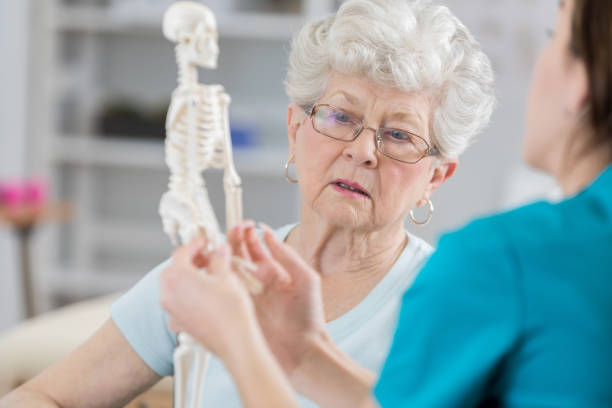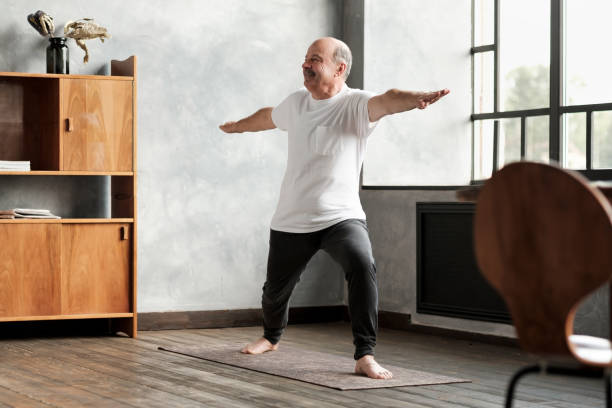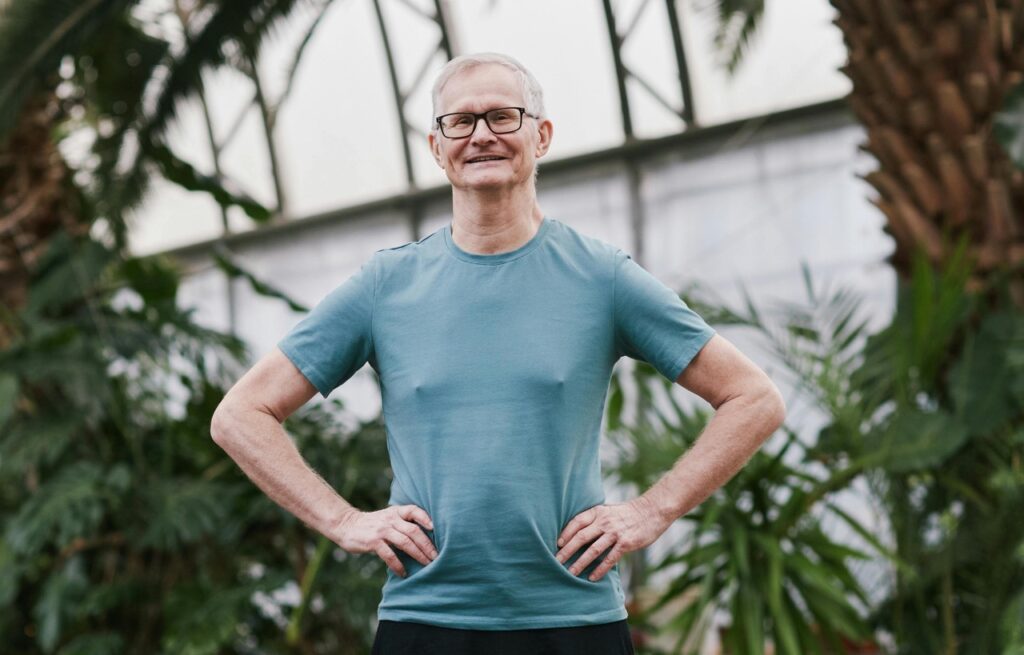Fitness Goals, Workouts
Can Seniors Improve Their Posture With Workouts
Maintaining proper posture is vital for people of all ages, but it is especially critical for seniors. As we age, our bodies go through natural changes that might affect our posture, such as muscular weakness, joint stiffness, and decreased flexibility. Poor posture can cause a variety of health difficulties, including back and neck pain, limited mobility, and even digestive problems. Seniors can improve their general health and quality of life by focusing on posture improvement.
Common Posture Issues in Seniors
Before we get into how workouts might assist improve posture, it’s vital to understand some of the most frequent posture concerns that seniors suffer. Some of the most common abnormalities include rounded shoulders, hunched backs, and forward head position. These difficulties can be caused by prolonged sitting, poor ergonomics, weak core muscles, and age-related spine abnormalities. Identifying these challenges is the first step toward addressing and resolving them.
Benefits of Improving Posture in Seniors
Improving posture provides numerous benefits for elders. For starters, it can help to relieve the pain and discomfort caused by improper posture. Seniors can relieve chronic back, neck, and shoulder discomfort by restoring alignment and minimizing muscle and joint tension. Furthermore, good posture increases balance and stability, lowering the chance of falling and resulting injuries. Improved posture also promotes better breathing and circulation, resulting in more energy and vitality.

How Exercise Can Improve Posture
Exercise is an effective method for improving posture in seniors. Regular physical activity strengthens the core muscles, which are essential for maintaining appropriate alignment. When the core muscles are weak, the body compensates by slouching or holding abnormal positions. Seniors can improve their posture by doing core-focused workouts.
Recommended Exercises for Seniors to Improve Posture
There are a number of exercises created expressly to help elders improve their posture. These exercises aim to strengthen the core muscles, improve balance, and increase flexibility. Here are some recommended exercises:
- Planks.
Planks are a wonderful workout for seniors looking to strengthen their core muscles. Begin by lying on your stomach and lifting your body off the ground, using your forearms and toes to support yourself. Hold this position for at least 30 seconds. You can gradually increase the duration of the plank. This exercise strengthens the abdomen and back muscles, which promotes good posture.
- Bridges.
Bridges work the glutes and lower back muscles, which are necessary for proper posture. Lie on your back, legs bent, feet flat on the ground. Slowly lift your hips off the ground to form a straight line from your shoulders to your knees. Hold the stance for a few seconds before lowering your hips back down. Repeat this practice multiple times. Bridges serve to strengthen back muscles and enhance spinal alignment.
- Bird Dogs.
Bird-dogs are a moderate workout that works the core and back muscles. Begin on all fours, placing your hands directly under your shoulders and your knees beneath your hips. Extend your right arm forwards while also extending your left leg backward. Hold this position for a few seconds before returning to the starting position. Repeat on the other side. Bird-dogs promote core stability and strengthen the muscles essential for proper posture.

Stretching Exercises for Seniors to Improve Posture
Stretching, in addition to core workouts, is essential for seniors’ posture improvement. Stretching activities promote flexibility, relieve muscle tension, and improve range of motion. Here are some recommended stretching exercises.
- Upper Back Stretch
Stand with your feet shoulder-width apart, hands clasped in front of you. Extend your arms forward to round your upper back and feel a stretch between your shoulder blades. Hold this position for 10-15 seconds and then release. Repeat a few times. This stretch helps to counterbalance the forward head posture and encourages a more upright position.
- Chest Stretch
Stand near a doorway or a wall corner. Place your forearm on the wall and your elbow at a 90-degree angle. Lean gently forward until you feel a stretch in your chest and front shoulder. Hold the stretch for 15-30 seconds and then swap arms. Chest stretches help to loosen up the chest muscles and counteract the rounded shoulders that are common in seniors.
- Hip Flexor Stretch.
Stand with one foot forward and the other foot back, both pointing forward. Keep your back straight and softly move your weight forward, bending your front knee. You should feel a stretch in the front of your back leg. Hold the stretch for 15-30 seconds and then swap legs. Hip flexor exercises enhance posture by loosening the hip flexor muscles, allowing for a more upright position.
Strength Training Exercises for Seniors to Improve Posture
Strength training is not just for the young; it is also useful for the elderly. Strengthening the muscles that support proper posture can significantly improve overall alignment. Here are some strength training activities appropriate for seniors:
- Seated Rows
Sit on a bench or chair, feet flat on the ground, with a resistance band or cable machine in front of you. Hold the handles with your arms extended. Pull the handles towards you with your back straight and your shoulders relaxed, pressing your shoulder blades together. Slowly return to the starting position. Seated rows target the upper back muscles, which help to correct rounded shoulders and improve posture.
- Deadlifts
Stand with your feet hip-width apart, holding dumbbells or kettlebells in front of your thighs. Hinge at the hips while keeping your back straight and descend the weights to the ground. To return to a standing position, use your glutes and hamstring muscles. Deadlifts develop the posterior chain muscles, which include the lower back and glutes, resulting in improved posture and spinal alignment.
- Wall Squats
Stand with your back to a wall and your feet shoulder width apart. Slowly slide down the wall, bending your knees to a 90-degree angle. Hold this position as long as you can before pushing through your heels to return to a standing position. Wall squats strengthen the leg muscles, particularly the quads and glutes, which are essential for maintaining appropriate posture.

Posture Correction Devices for Seniors
In addition to exercises, seniors can benefit from adopting posture correction equipment to improve their alignment. These devices are intended to provide help and reminders to keep appropriate alignment. Here are a few common posture-correcting devices:
- Posture Corrector Brace
A posture corrector brace is a worn device that helps straighten the shoulders and upper back, resulting in improved posture. It offers modest support and urges the wearer to keep an upright posture. Posture corrector braces come in a variety of sizes and styles, making it easier for seniors to select one that meets their needs.
- Ergonomic Chairs and Pillows
Investing in ergonomic seats and cushions might help you maintain good posture while sitting for lengthy periods. These specifically designed seats and cushions support the spine, encouraging appropriate alignment and relieving tension on the back and neck. Seniors who spend a lot of time sitting would benefit immensely from these devices.
- Lumbar Support Cushions
Lumbar support cushions are intended to provide lower back support while sitting, hence promoting appropriate spinal alignment. These cushions can be used on chairs, in cars, or when lying down. Lumbar support pillows are an inexpensive and efficient technique for seniors to enhance their posture during the day.
Tips for Maintaining Good Posture Throughout the Day
Aside from exercises and equipment, seniors can follow a few basic guidelines to maintain excellent posture throughout the day. Here are some useful suggestions:
- Be aware of your posture: Pay attention to how you sit, stand, and move. Make an effort to keep your spine straight and your shoulders relaxed.
- Take regular pauses: If you spend a lot of time sitting, you should take breaks to stretch and move about. This helps avoid muscle tightness and improves circulation.
- Practice proper ergonomics: Make sure your work space, including your desk, chair, and computer setup, is ergonomically structured to promote healthy posture.
- Use proper lifting techniques: When lifting large objects, bend at the knees and engage your leg muscles rather than your back.
- Stay active: Regular exercise and physical activity, such as walking, swimming, or yoga, can assist maintain muscle strength and flexibility, promoting excellent posture.
Conclusion
Improving posture is not just a possibility for me as a senior but an essential aspect of my overall health and well-being. Through incorporating regular exercise, targeted workouts, and utilizing posture correction devices, I can work towards achieving better alignment, reducing pain, increasing flexibility, and enjoying the myriad benefits that come with improved posture. Consistency is key in this journey. By making these exercises and habits a part of my daily routine, I can take control of my posture, ensuring a higher quality of life as I age. I won’t let age be a barrier to good posture; I’m starting today to experience the transformative power of a strong, aligned spine.
My body is designed to move, and with the right exercises and techniques, I can improve my posture and relish the benefits of better alignment. Whether it’s through core exercises, stretching, strength training, or the use of posture correction devices, I have a variety of options to choose from. So, I am taking charge of my posture, embracing a healthier lifestyle, and savoring the improved well-being that comes with it.
I remind myself that it’s never too late to start, and every small step towards better posture counts. My body will thank me, and I’ll feel the positive difference in my day-to-day life. Let’s get moving and work towards a stronger, more confident posture!


